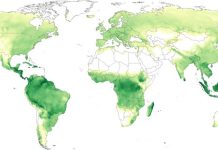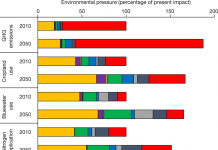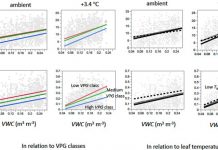【脂肪酸是植物传给菌根真菌主要碳源】Yina Jiang Wanxiao Wang Qiujin Xie et al. Plants transfer lipids to sustain colonization by mutualistic mycorrhizal and parasitic fungi. Science 2017 Vol. 356 Issue 6343 pp. 1172-1175 DOI: 10.1126-science.aam9970
Abstract
Arbuscular mycorrhizal (AM) fungi facilitate plant uptake of mineral nutrients and draw organic nutrients from the plant. Organic nutrients are thought to be supplied primarily in the form of sugars. Here we show that the AM fungus Rhizophagus irregularis is a fatty acid auxotroph and that fatty acids synthesized in the host plants are transferred to the fungus to sustain mycorrhizal colonization. The transfer is dependent on RAM2 (REQUIRED FOR ARBUSCULAR MYCORRHIZATION 2) and the ATP binding cassette transporter–mediated plant lipid export pathway. We further show that plant fatty acids can be transferred to the pathogenic fungus Golovinomyces cichoracerum and are required for colonization by pathogens. We suggest that the mutualistic mycorrhizal and pathogenic fungi similarly recruit the fatty acid biosynthesis program to facilitate host invasion.
【2006-2014年中国湖泊的总磷浓度】Yindong Tong Wei Zhang Xuejun Wang et al. Decline in Chinese lake phosphorus concentration accompanied by shift in sources since 2006. Nature Geoscience 10 507–511 (2017) doi:10.1038-ngeo2967
Abstract
Domestic wastewater and agricultural activities are important sources of nutrient pollutants such as phosphorus and nitrogen. Upon reaching freshwater these nutrients can lead to extensive growth of harmful algae which results in eutrophication. Many Chinese lakes are subject to such eutrophication especially in highly polluted areas and as such understanding nutrient fluxes to these lakes offers insights into the varying processes governing pollutant fluxes as well as lake water quality. Here we analyse water quality data recorded between 2006 and 2014 in 862 freshwater lakes in four geographical regions of China to assess the input of phosphorus from human activity. We find that improvements in sanitation of both rural and urban domestic wastewater have resulted in large-scale declines in lake phosphorus concentrations in the most populated parts of China. In more sparsely populated regions diffuse sources such as aquaculture and livestock farming offset this decline. Anthropogenic deforestation and soil erosion may also offset decreases in point sources of pollution. In the light of these regional differences we suggest that a spatially flexible set of policies for water quality control would be beneficial for the future health of Chinese lakes.
【湿地土壤碳对水位下降的响应机制】Yiyun Wang Hao Wang Jinsheng He Xiaojuan Feng. Iron-mediated soil carbon response to water-table decline in an alpine wetland. Nature Communications 8: 15972 (2017) doi:10.1038-ncomms15972
Abstract
The tr







